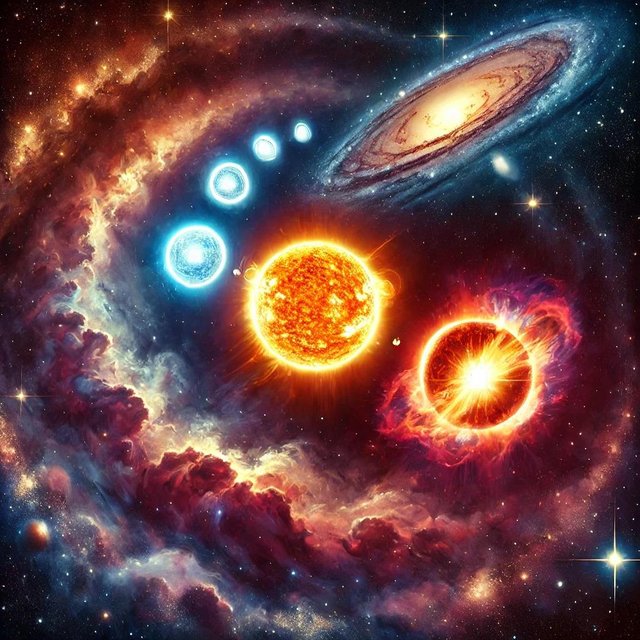
What Are Stars?
Stars are massive balls of glowing gas, mainly hydrogen and helium, held together by gravity. They are the building blocks of galaxies and produce light and heat through a process called nuclear fusion.
The Birth of a Star
Stars are born in giant clouds of gas and dust called nebulae. These clouds are spread across galaxies and act as star nurseries.
Steps in Star Formation:
- Nebula Collapses: Gravity pulls gas and dust together into a dense core.
- Protostar Forms: The core becomes hot and dense, forming a protostar.
- Nuclear Fusion Begins: When the temperature and pressure are high enough, hydrogen atoms fuse to form helium, releasing energy. This marks the birth of a star.
Stars spend most of their lives in a stable phase called the main sequence, where they steadily burn hydrogen.
Why Do Stars Shine?
Stars shine because of nuclear fusion. This process releases immense energy as light and heat. The balance between gravity pulling inward and the energy pushing outward keeps the star stable.
The Life Cycle of Stars
Not all stars are the same. Their life cycle depends on their size:
- Small Stars: These burn fuel slowly and can live for billions of years.
- Medium Stars (Like the Sun): They burn faster and turn into red giants before ending as white dwarfs.
- Massive Stars: These have short but dramatic lives, ending as supernovae or black holes.
How Do Stars Die?
Stars die when they run out of fuel. The way they die depends on their size:
Small and Medium Stars:
- They expand into red giants as they burn helium.
- They shed outer layers, forming a planetary nebula.
- The core remains as a white dwarf, which slowly cools over time.
Massive Stars:
- They explode in a supernova, scattering heavy elements across space.
- The core may collapse into a neutron star or a black hole.
The Importance of Star Death
When stars die, they release elements like carbon, oxygen, and iron into space. These elements are essential for forming planets and life. For example, the iron in your blood was made in a dying star billions of years ago!
Quick Facts About Stars
- The Sun is a medium-sized star and will become a red giant in about 5 billion years.
- Massive stars can end as black holes, regions so dense that not even light can escape.
- Nebulae, where stars are born, are often called “stellar nurseries.”
Conclusion
Stars have incredible life cycles, from their fiery births in nebulae to their explosive deaths as supernovae. Understanding stars helps us learn about the universe and even the origins of life on Earth. Every star tells a story, and their light continues to shine, even after they’re gone.
Upvoted! Thank you for supporting witness @jswit.
Downvoting a post can decrease pending rewards and make it less visible. Common reasons:
Submit